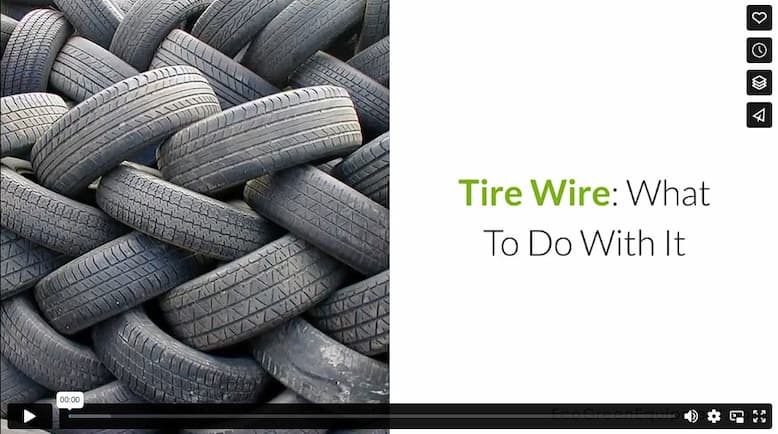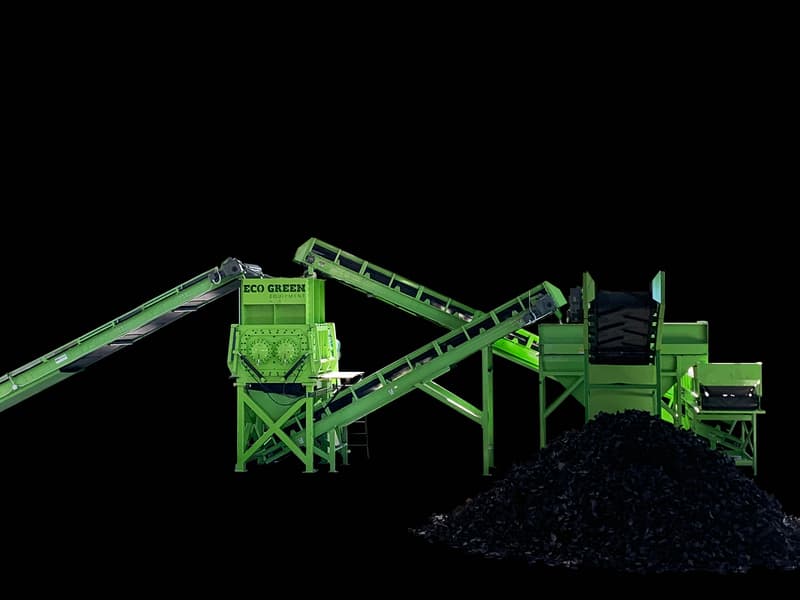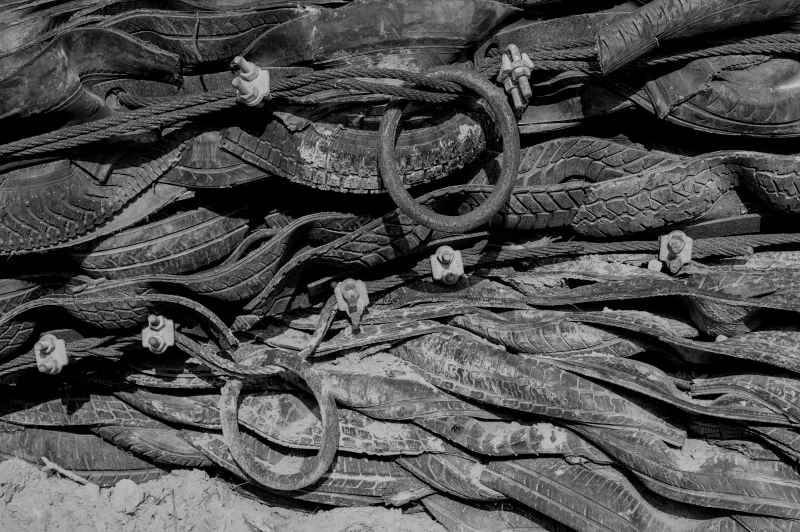Tires are made of three basic substances – rubber, steel wire, and polyester fibers. Recycling a tire involves separating, sorting, and recycling these three materials. There are many growing markets for rubber from tires. It is often sold for use in tire derived fuel (TDF) or crumb rubber. The fibers are less often recycled but must be separated from the rubber and steel to avoid contaminating them. The steel is likely the most easily recycled product of the three. It can be melted down and reused in many different steel and cast iron products.
Recycling these three distinct substances involves cutting or grinding the rubber into smaller fragments from which the wire and fibers can more easily be removed. The wires, which make up roughly 10-20% of the tire (or 2.5 lbs.), are extracted in the beginning stages of the recycling process. The wire is made of steel and is easily drawn out by magnets. Removing the metal early saves wear and tear on machinery further down the line.
At this phase of the process, the wire has undergone minimal mechanical processing, and it often brings with it a fractional amount of rubber and fiber. It is not pure steel. While these substances may only make up a small percentage of the end product, they make the steel wire unsuitable for smelting in its present condition. The wire must be cleaned further before it is ready to be melted down and recycled into other steel products.
The Market for Recycled Steel
While demand for recyclable steel is high worldwide, a significant number of rubber recycling plants do not recycle the steel wire that they remove from tires. With scrap steel in high demand and easy to recycle, it seems an obvious thing to do, but there are several reasons businesses take a pass on this process—the first and foremost being the widely fluctuating market for steel.
The price per ton for recycled steel varies widely based on several factors. It can range from $35-$325 per ton. As is the case for many products bought and sold internationally, the price varies with the global demand. In the United States, steel is most often used in building products for the construction industry. Demand may rise and fall with the economy. The United States is also a large exporter of recycled steel, selling to Turkey, China, Taiwan, and Canada.
Another major factor affecting pricing is the quality of the steel product. Straight from the tire, steel wire contains a certain level of contamination, making it a lower quality form of recyclable steel. It may have anywhere from 3%-25% rubber and fiber. As such, it does not carry the same price tag as more pure steel does. The steel wire requires further cleaning before it can be processed in a recycling plant.
The market price of recyclable tire wire also varies with the physical condition of the product. Once removed from the tires, the steel has a large surface area exposed to the air. This exposure causes the metal to rust, particularly when it is stored improperly. Taking care to process and store the wire in a protected space will protect the wire from weathering and increase profits when sold. Additionally, briquetting or baling the steel wire the way a farmer bales hay produces a denser product that takes up less space to transport. In many cases, wire in this form may be more desirable to a potential buyer, as shipping costs may be lower. Other buyers prefer to buy tire wire loose so that they can easily see the level of contamination in the product.
What Does This Mean for Tire Recyclers?
After examining the scrap steel market alternatives, the question becomes whether it is more profitable to sell the wire as it is removed from the tires or try to produce a cleaner product that may sell at a higher price.
One option for tire recyclers is to introduce machinery that will clean the wires. These machines are able to produce a cleaner scrap steel product using sheering and other pressing forces to separate the fibers and rubber from the wire. However, machinery is expensive, and cleaning tire wire introduces another step to the recycling process, as well as the need for more space for daily operations. This cleaning process can further recover additional rubber that can be reintroduced into the recycling line. Thus, profits on both the rubber and the steel may increase by adding this extra step.
Some recycling companies have been able to contract with local steel mills to buy their product as is. This type of deal leaves the extra cleaning in the hands of the steel recycler. In these cases, the scrap steel buyer may base their purchase price on the amount of rubber and fiber contamination in the product at the time of sale.
Most tire recyclers end up selling their product to a broker to sell their steel wire for them on the global market.
There are many options when it comes to selling scrap steel wire for recycling. Exploring options for improving your product’s quality may be beneficial to your bottom line, keeping in mind that the price of steel will fluctuate. No matter which business model you choose, recycling all the tire components helps keep waste out of landfills and reduce our draw on natural resources.
Video





